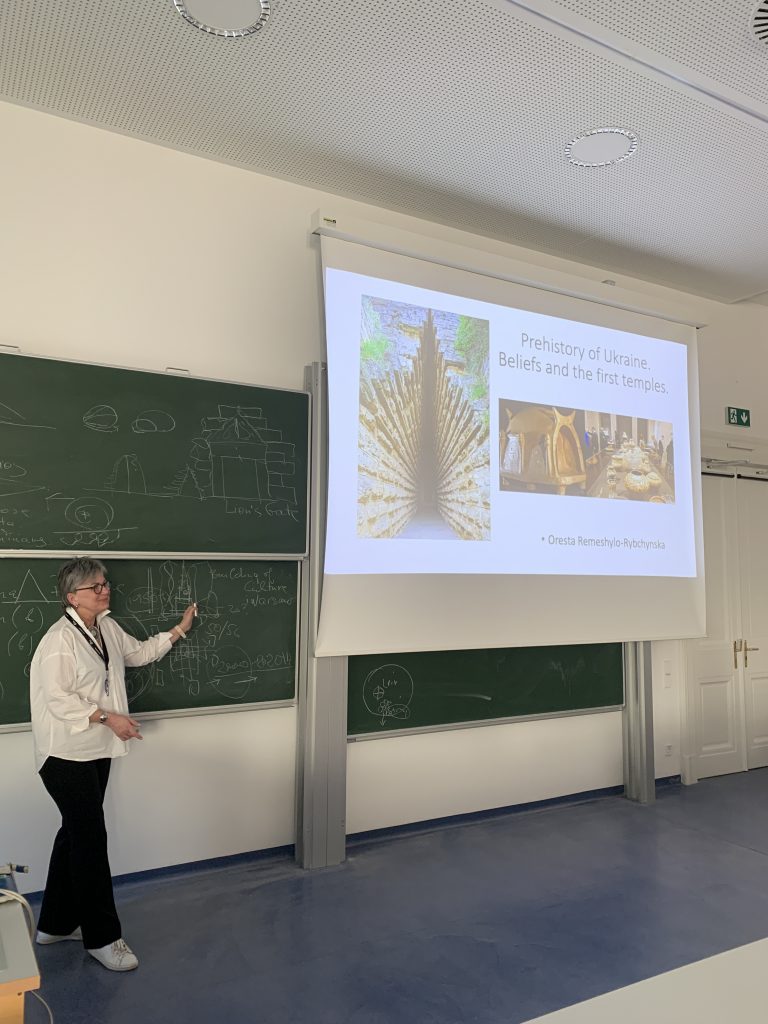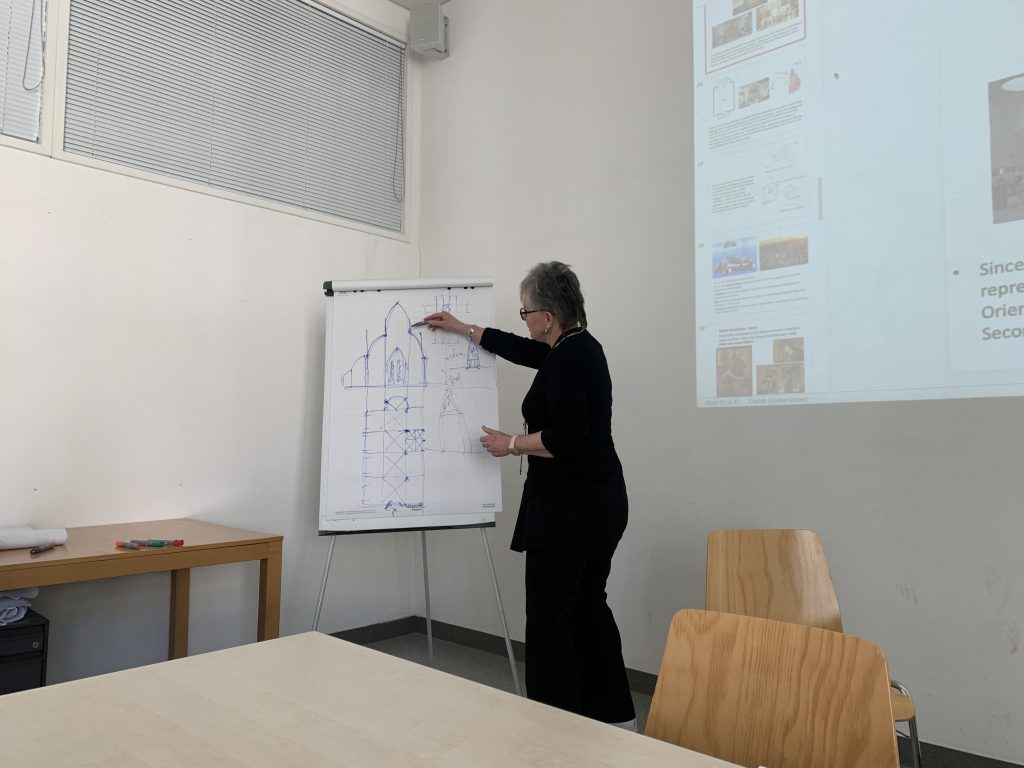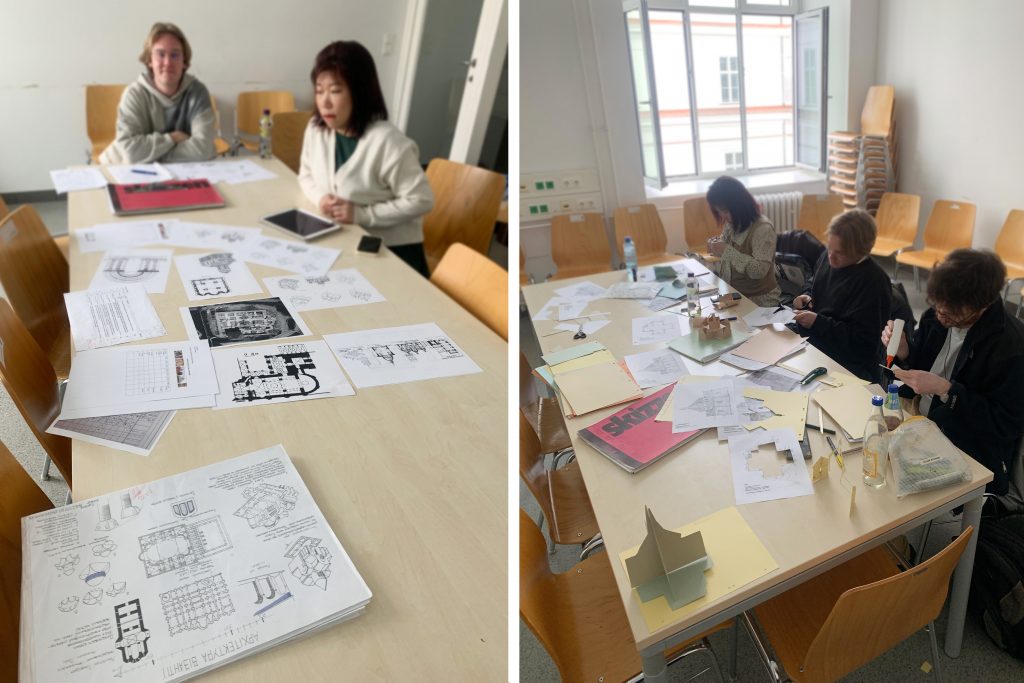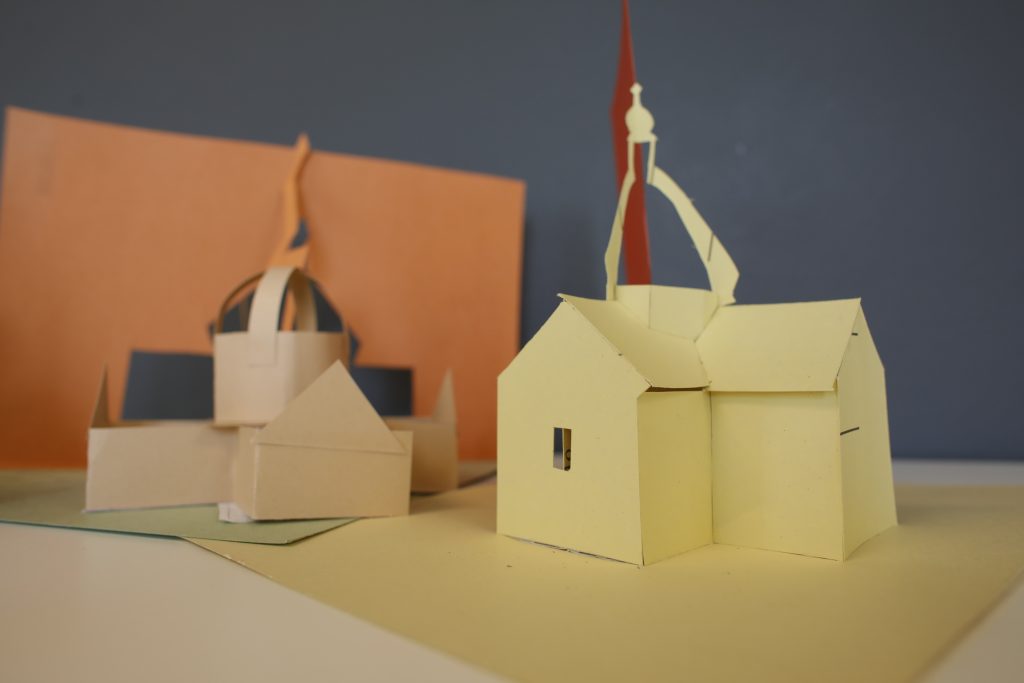Sakralbau in der Ukraine
Das Thema “Sakralbau” wird bereits seit einigen Jahren am Forschungsbereich vertieft behandelt. Im Sommersemester 2023 lag der dezidierte Schwerpunkt auf den Bauten der Ostkirche, und zwar mit Blick auf die Ukraine, wo auch das Christentum noch gelebte Religion ist und enorme Bedeutung im täglichen Leben hat.
Sacred buildings in Ukraine today are represented by Christian Catholic, Greek Catholic and Orthodox churches and cathedrals, as well as, synagogues and mosques made of brick, stone and wood. The best examples of historical sacred buildings have even been included in the UNESCO list of World Heritage Sites. They are remarkable for their structural, architectural, artistic and decorative solutions.
Ukraine is a country where Christianity is not just a “cultural Christianity” but a living religion that is of great importance in everyday life. Understanding the role and associations that these buildings evoke – in terms of architecture and religion, as well as in terms of the individual history of the building, the city and the urban situation – is a key challenge for contemporary architects.
In the course of this project, namely during guest lectures by Associate Professor Oresta Remeshylo-Rybchynska (from the Department of DOA at the Institute of Architecture and Design, Lviv Polytechnic National University), a number of examples of the historical and modern Ukrainian churches, both in the country and abroad, were presented and discussed.
The project presented
- the history of the formation of Christian churches of the basilica and cross-domed (Byzantine) types;
- architectural and spatial solutions of sacred buildings of the times of Kyivan Rus;
- stylistic features of churches and monasteries of Ukraine built in the Renaissance, Baroque, Classicism and Historicism;
- originality and symbolism of constructive solutions of wooden churches of the 18th and 19th centuries, in particular the Church of St. Michael in the village of Pirhirtsi, near Lviv (architectural measurements of which were made by students from the TU Vienna and Lviv during the summer school in 2003 under the joint guidance of Professors Marina Doering-Williams and Oresta Remeshylo-Rybchynska);
- and discussed a number of examples of modern Ukrainian churches, both in the country and abroad.
The students received not only the theoretical basis of the subject during the lectures, but also learned to record their understanding of the structural and spatial design of sacred buildings by researching literature, taking photographs, sketching from nature (during the exposition), and sketching on A3-sheets.
The final stage of the course is the implementation of their own sketch project for the reconstruction of the mentioned church in the village of Pidhirtsi (which burned down in 2006 under unclear circumstances) on the basis of the measurement drawings made in 2003 and using new technologies of sacred construction and materials.
“The biggest surprise for me,” Associate Professor Oresta Remeshylo-Rybchynska says, “was the subtle sense of harmony of sacred singing and liturgical content of the churches, by students from different countries: Germany, China, Austria. During the discussions after each lecture, they asked very competent professional questions. They enthusiastically kept notes in their sketchbooks and were interested in modelling images of sacred buildings in cardboard and paper.”
As a final small “project” based on the course outcomes and the materials and building surveys made by the students of the TU Vienna and Lviv during the summer school in 2003, (under the joint supervision of Professor Marina Doering Williams of the TU Vienna and Associate Professor Oresta Remeshylo-Rybchynska), the students had the opportunity to discuss and develop their own preliminary design for the reconstruction of a lost 18th century wooden church in Pidhirtsi, near Lviv (Lemberg).






Fotos by Oresta Remeshylo-Rybchynska, Birgit Glocker
